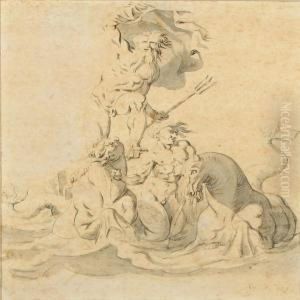Johannes Wiedewelt Paintings
Johannes Wiedewelt was a notable Danish neoclassical sculptor born on November 1, 1731, in Copenhagen, Denmark. He hailed from a family of artists; his father, Just Wiedewelt, was a sculptor, and his mother, Catharine Elisabeth Wiedewelt, was the daughter of a painter. This creative environment significantly influenced Wiedewelt's artistic development.
Wiedewelt's early training was under his father, after which he traveled to Paris to study at the French Royal Academy of Painting and Sculpture. There, he was profoundly impacted by the classical art and the emerging Neoclassical style. He won the Academy's small gold medal in 1757 for a bas-relief, which was an early sign of his burgeoning talent.
After his time in Paris, Wiedewelt continued his studies in Rome from 1759 to 1762, where the antiquity of the city further shaped his artistic vision. He was especially taken with the works of the ancient Roman sculptor, Antonio Canova. Wiedewelt's work from this period began to reflect the purity, simplicity, and serenity of classical art, distancing itself from the more elaborate Rococo style that had previously been prevalent in European art.
Upon his return to Denmark in 1762, Wiedewelt became the official sculptor to the Danish Court. He was an influential figure in introducing the Neoclassical style to Denmark, which was evident in his work on various projects, including the gardens at the Fredensborg Palace, where he created a series of statues and reliefs. Wiedewelt's reputation grew, and he was appointed a professor at the Royal Danish Academy of Fine Arts, later serving as its director.
Throughout his career, Wiedewelt worked on many important commissions, including funerary monuments, which were among his most significant contributions to Danish art. His works are characterized by their restrained elegance and adherence to classical form. Wiedewelt's influence extended beyond his sculptures, as he was also involved in designing buildings, garden layouts, and other decorative arts.
Johannes Wiedewelt's legacy is marked by his role as a pioneer of Neoclassicism in Danish sculpture and the broader Scandinavian art scene. His works can still be seen in various locations around Denmark, including museums and public spaces. Wiedewelt passed away on December 17, 1802, in Copenhagen, leaving behind a body of work that continues to be admired for its classical beauty and historical significance.
